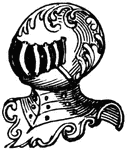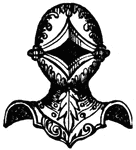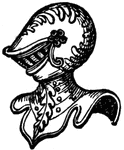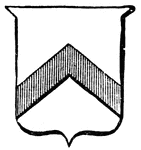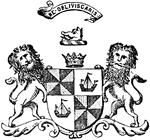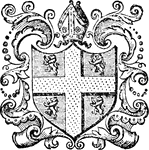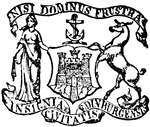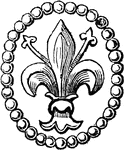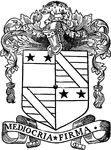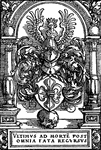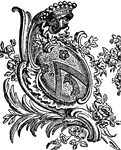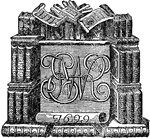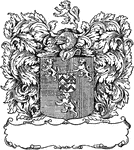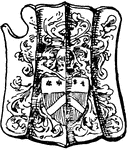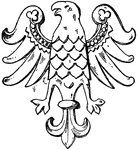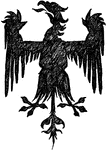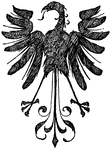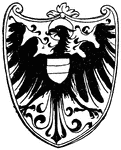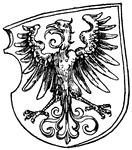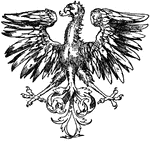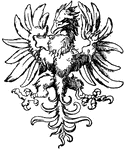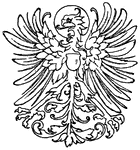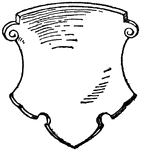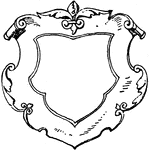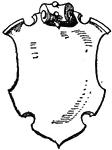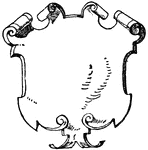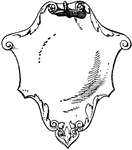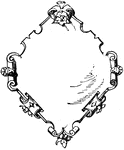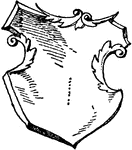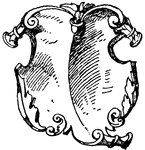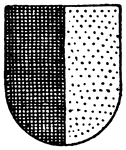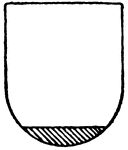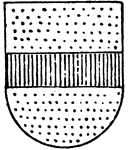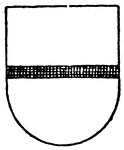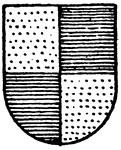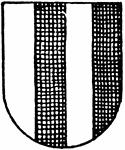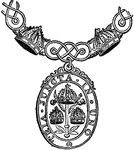
Badge, Order of Bath
"Order of the Bath, in heraldry, etc., an order of knighthood, so called because the recipients of the…
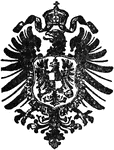
German Eagle
"The Eagle is an emblem in heraldry, war, and legend. The eagle, borne upon a spear, was used by the…
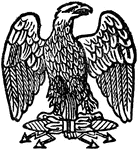
French Eagle
"The Eagle is an emblem in heraldry, war, and legend. The eagle, borne upon a spear, was used by the…
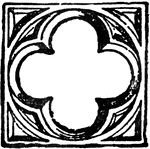
Quatrefoil
"The quatrefoil is four-leaved grass; a frequent bearing in coat-armor."—(Charles Leonard-Stuart,…
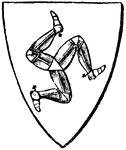
Charge
Human legs are not unfrequently born as charges in Heraldry, sometimes naked, sometimes booted, and…

Rampant Lion
"The lion holds an important place among the animals born in coat-armor. As early as the 12th century,…
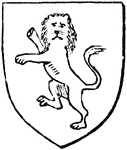
Gardant Lion
"The lion holds an important place among the animals born in coat-armor. As early as the 12th century,…
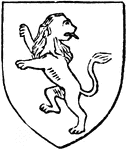
Rampant Regardant Lion
"The lion holds an important place among the animals born in coat-armor. As early as the 12th century,…
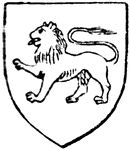
Passant Lion
"The lion holds an important place among the animals born in coat-armor. As early as the 12th century,…

Lion
"The lion holds an important place among the animals born in coat-armor. As early as the 12th century,…
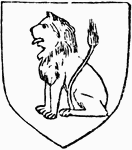
Lion
"The lion holds an important place among the animals born in coat-armor. As early as the 12th century,…
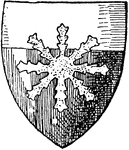
Heater shield
"The best known heraldic shield is that called the heater-shaped, a type common during the thirteenth…
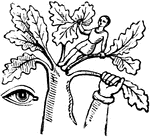
Rebus of Abbot Islip
A group of words or phrase written by figures or pictures of objects whose names resemble in sound the…
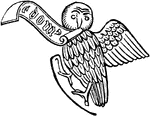
Rebus of Bishop Oldham
A group of words or phrase written by figures or pictures of objects whose names resemble in sound the…
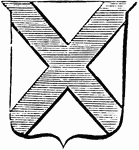
Saltire Flag
In heraldry, an ordinary in the form of St. Andrew's cross, formed by two bends, dexter and sinister,…
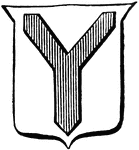
Shake-Fork
"In heraldry, a bearing resembling the pall (Y-shaped), but not reaching the edges of the escutcheon:…

Quarterly Shield
"Quarterly, first and fourth argent, a chevron gules, second and third gules, a cross argent (that is,…
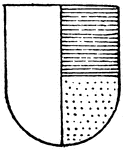
Per Pale Ordinary
The Per Pale Ordinary has the right half side in argent (silver) and the left half in per fesse azure…
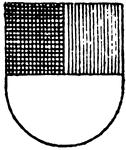
Per Fesse Ordinary
The Per Fesse Ordinary has an upper half that is per pale sable (black) and gules (red), and the lower…
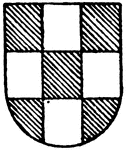
Checky Ordinary
The Checky Ordinary has nine checkers that are vert (green) and argent (silver) colors.
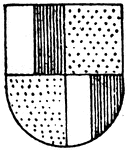
Quarterly Ordinary
The Quarterly Ordinary has the 1st and 4rth per pale in argent (silver) and gules (red) color, the 2nd…
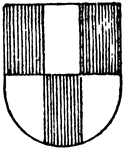
Per Fesse Ordinary
The Per Fesse Ordinary has gules (red) and argent (silver), and a pale counterchanged.
